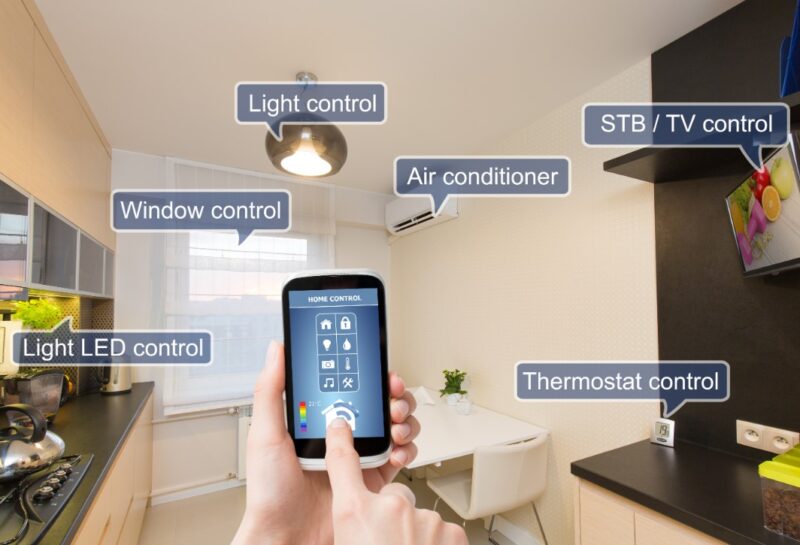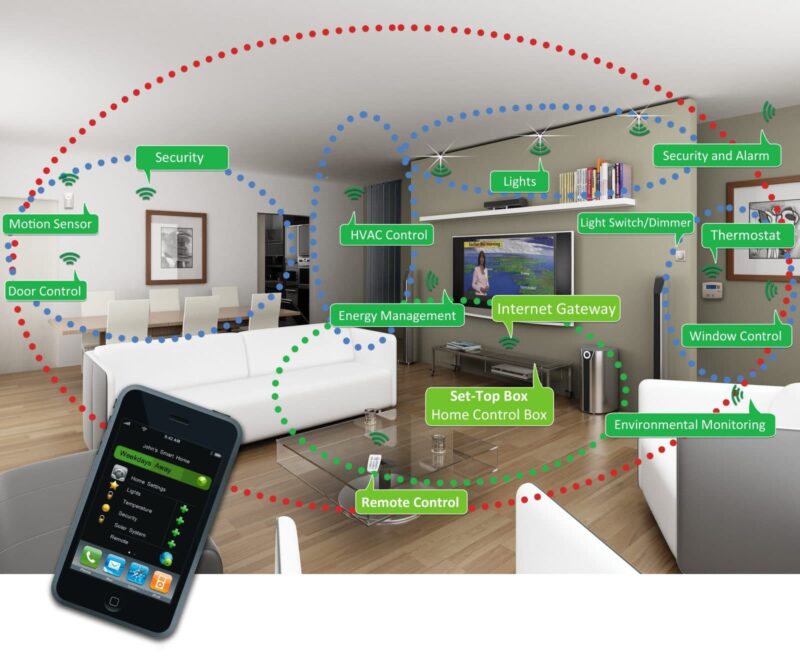Home automation in the 21st century is all about wireless. Sure, we could run miles of cable and connect to electrical boxes to wire every automation device in a home. But why go to all that trouble when wireless technology works just fine? The thing about wireless is that there is more than one way to do it.
In order to get wireless devices to talk to one another, they need a shared language. They need what is known professionally as a communication protocol. Many of today’s home automation devices are capable of multiple protocols. However, some are not. They work on a single protocol.
Vivint Smart Home offers a brief discussion of home automation’s six communication protocols in a recent guide to home automation published on their website. The guide also contains a ton of additional information. I will focus only on the communication protocols. So let’s get started.
1. Wi-Fi
Wi-Fi is arguably the most common wireless protocol for residential use. It is the oldest of the six and the one just about everyone is familiar with. Wi-Fi relies on radio waves at frequencies of either 2.4 or 5 GHz. It has been around since the late 1990s and enjoys nearly worldwide adoption.
One of the downsides of relying on Wi-Fi for home automation is traffic. Wi-Fi is the main communication protocol for desktop computers, laptops, tablets, mobile phones, and even streaming devices. Limited bandwidth dictates that increasing traffic on a Wi-Fi network slows things down for every device.
If you were to have all your normal devices plus several dozen home automation devices all sharing the same Wi-Fi network, you could notice considerable lag. So manufacturers sometimes help consumers get around that problem by making the devices compatible with other protocols.
2. Bluetooth

Next up is Bluetooth. It was originally developed as a short-range wireless technology primarily for exchanging data between fixed and mobile devices over short distances. Think of Bluetooth as more of a personal area network (PAN) solution as opposed to Wi-Fi being more of a wide area network (WAN) protocol.
Bluetooth offers decent speeds at frequencies ranging from 2.40 to 2.48 GHz. Its major downside is broadcast distance. Because it is a low-power protocol, it has a range of only about 30-35 feet.
Fixed devices that are fairly close to a Bluetooth hub work fine on the technology. Let us say you had your hub mounted on the wall in your kitchen. Your thermostat is just down the hall, about 10 feet away. The two could connect with Bluetooth and have no issues. But if you wanted to use a Bluetooth device in the master bedroom, which was located on the other side of the house and on the second floor, it is probably not going to work.
3. Z-Wave
Next to Wi-Fi, Z-Wave is the next most popular and widely adopted communication protocol for wireless home automation. It’s especially popular here in the U.S. It offers secure transmission, high compatibility, and low interference. But it does require a centralized hub.
Unlike Wi-Fi, Z-Wave makes use of radio signals that are part of the industrial, scientific, and medical (ISM) band. Frequency ranges very slightly in different jurisdictions. In North America, the range is from 908-916 MHz. Internationally, Z-Wave can utilize everything from 800-900 MHz.
In terms of range, Z-Wave maxes out at about 2,600 feet across an entire network. Point-to-point, the range is about 328 feet. That is still more than enough for a home automation system.
4. Zigbee

Fourth on our list is a protocol known as Zigbee. One of its big advantages for home automation is low energy consumption. Like Z-Wave, it also requires a centralized hub to work. And while Zigbee offers secure transmission, it is an open protocol. That means there are inherent security risks.
Zigbee is ideally most suited for battery operated home automation devices that will remain stationary for the most part. A good example would be a wireless video camera that you mount to the wall. Low power consumption means longer battery life. And because the camera will not be moved, you do not have to worry about range.
5. Thread
Among the newer kids on the block is Thread. The Thread protocol was developed by Google and is now supported by a number of other players in the home automation industry. Its most attractive features are speed and easy integration.
Thread is IP-based, making for easier communication with both cell and Wi-Fi networks. It relies on radio signals at 2.4 GHz, just like Wi-Fi, but it is surprisingly more responsive and reliable. It is also considered quite secure.
There are some rumors within the industry that Thread could ultimately displace Wi-Fi. I am not so sure that’s the case. Will have to wait to see how many other tech companies adopt it. Right now, Thread is on the outside looking in. Manufacturers are not falling all over themselves to get on board with it.
6. Insteon

The last communication protocol on our list is the most recently developed: Insteon. This protocol is a bit unusual because it relies on a combination of wired and wireless technologies. However, that’s not as bad as it sounds.
Insteon’s biggest plus is that it’s easy to use. It was developed especially for home automation as a means of simplifying the process of connecting new devices. The protocol connects extremely quickly. Setup is easy and connected devices can exchange data faster than any other protocol. In some cases, you don’t even need a hub to make it work. The downside is that Insteon devices are not compatible with any other protocol. So if you start with an Insteon system, you have to stick with it.
Having multiple communication protocols to choose from is a good thing. It gives people the opportunity to build home automation networks based on their own needs and desires rather than what manufacturers think they should do. At least that’s how I see it.

